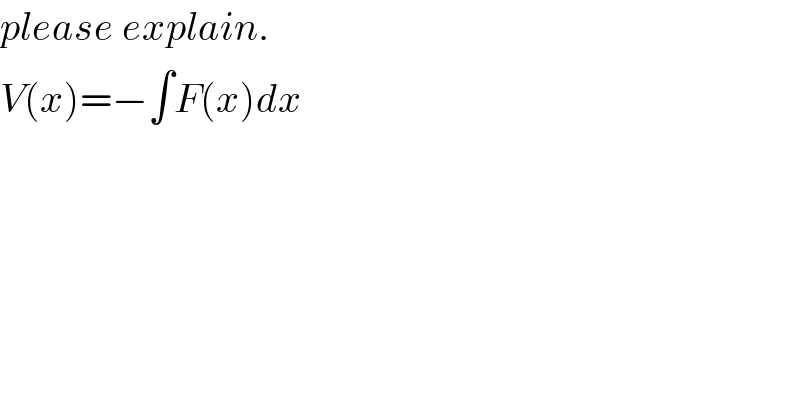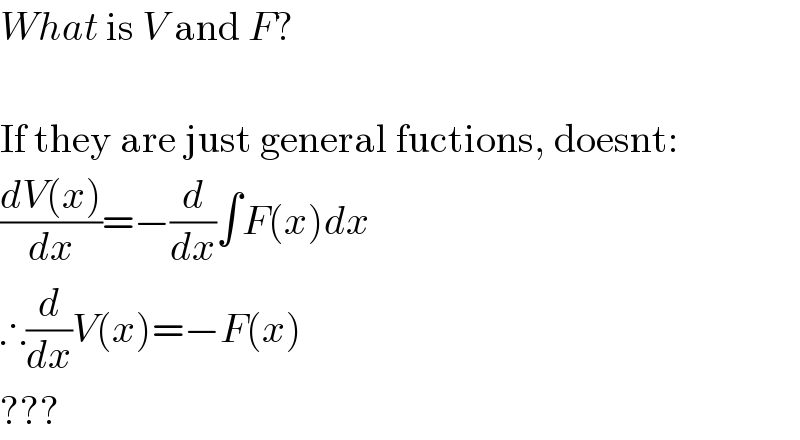
Question Number 4793 by madscientist last updated on 11/Mar/16

$${please}\:{explain}. \\ $$$${V}\left({x}\right)=−\int{F}\left({x}\right){dx} \\ $$$$ \\ $$$$ \\ $$
Commented by FilupSmith last updated on 11/Mar/16

$${What}\:\mathrm{is}\:{V}\:\mathrm{and}\:{F}? \\ $$$$ \\ $$$$\mathrm{If}\:\mathrm{they}\:\mathrm{are}\:\mathrm{just}\:\mathrm{general}\:\mathrm{fuctions},\:\mathrm{doesnt}: \\ $$$$\frac{{dV}\left({x}\right)}{{dx}}=−\frac{{d}}{{dx}}\int{F}\left({x}\right){dx} \\ $$$$\therefore\frac{{d}}{{dx}}{V}\left({x}\right)=−{F}\left({x}\right) \\ $$$$??? \\ $$
